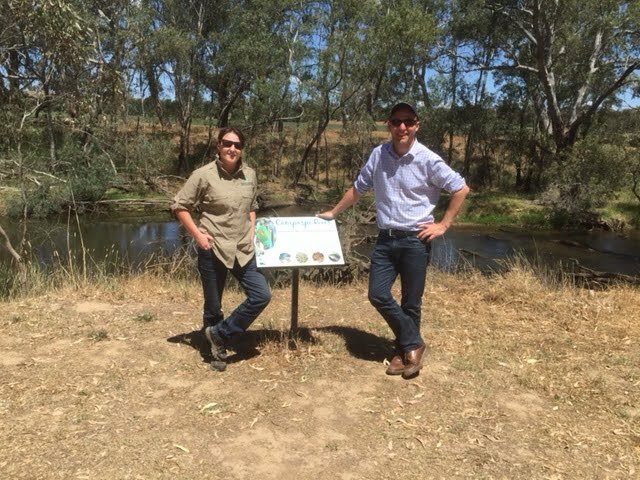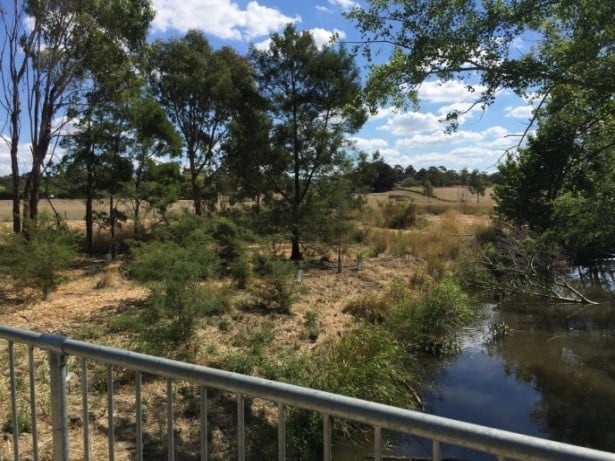Twinning Partnership:
Emma Wolters – North Central Catchment Management Authority & Adam Bester – Glenelg Hopkins Catchment Management Authority
Our project shared information about core on-ground river and riparian restoration delivery functions and the operational documents that sit behind them, for example, on-ground delivery manuals, as well as willow strategy and control documents.
our goals were:
- to learn from each other’s delivery programs and look for opportunities for improvement.
- for North Central CMA to learn about Glenelg Hopkins CMA’s approach to alternative water incentives
- Professional development: broadening networks, sharing knowledge and resources.
- for Glenelg Hopkins CMA to learn about North Central CMA’s approach to willow control and the use of project specific advisory groups to help plan and implement river health projects.
Our actions:
- We developed a trusted relationship where we could communicate open and honestly to each other about various topics of discussion via telephone call, email.
- We organised a field visit for Adam to examine on-ground delivery and operational approaches in the North Central CMA. We had the opportunity to share and talk about a range of topics before going into the field to have a look at examples of onground work that had been delivered.
- Glenelg Hopkins CMA has already incorporated the key learnings into its willow control program. The photos (next page) are before and after shots taken in 2016 of willow and elm removal on the Grange Burn in Hamilton.

Program’s Legacy
The incorporation of North Central CMA’s approach to willow removal has been a key contributing factor to Glenelg Hopkins CMA achieving more riparian willow control in 2015/16 than in any other year of its history.
- Key learnings from this twinning project have been incorporated into each CMA’s riparian investment programs over the next four years.
- The Twinning Program has built trust between each CMA to the point where we are willing to continue sharing information with one another on our programs into the future. That lasting connection and work contact is a key outcome from this Twinning Experience, not only between Adam and Emma but with all the other participants in the program.
What did you personally gain from the Waterway management Twinning Program?
“An indirect achievement was personal growth/development which Adam played a part in fostering. In terms of the personal growth and development experienced by me during this program, Adam presented me with a number of opportunities to develop, lead and present presentations and group feedback tasks to develop my speaking in front of groups. Adam also frequently let me know of opportunities to further my skills in this area such as facilitation workshops etc.
I like that this program offered a person of like for like or similar role to me. I liked that the program offered a mentee and mentor philosophy, however, both participants learnt heavily from each other.”
– Emma Wolters
At the beginning of this twinning project I was keen to understand an on-ground delivery program from someone who works directly in the field on riparian projects. Being largely office based I often feel I lose perspective and form my opinions/attitudes based largely on my waterway manager counterparts at other CMA’s.
“I really enjoyed the opportunity to all get together to meet each other and hear about progress. I found these projects and updates to be inspiring and motivating. I also enjoyed the facilitation of Siwan and the inclusion of personal development sessions.”
– Adam Bester

